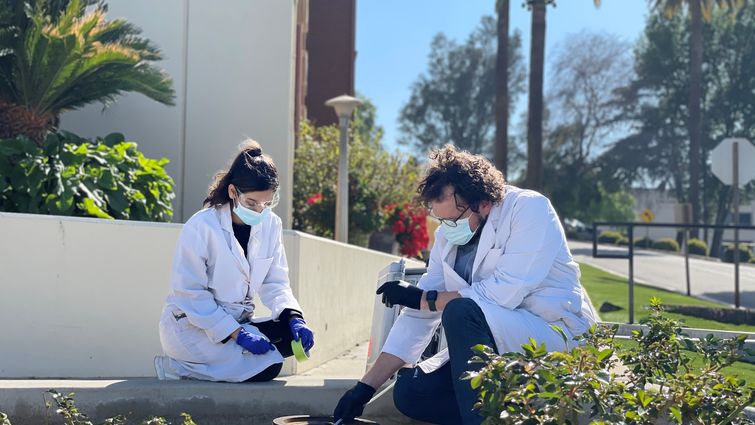
School of Public Health
Faculty and students from Loma Linda University School of Public Health have been monitoring possible COVID-19 exposure by testing wastewater on the Loma Linda University campus.
Ryan Sinclair, Ph.D., and professor in the School of Public Health has applied Wastewater Based Epidemiology (WBE) as an innovative method of surveillance. Wastewater monitoring has been used historically to track enteric viruses and other pathogens including the poliovirus vaccine and wildtype strains, norovirus, and others and drugs such as opioids but at generally smaller scales.
The WBE method has been shown to provide a four to 10-day early warning on impending COVID-19 outbreaks. Through this method, Sinclair and his team of students are able to detect a single infected individual within hundreds of dorm students.
“The RNA from COVID-19 can be detected in feces early in the infection before clinical symptoms. This makes wastewater a perfect tool to monitor potential infections in buildings on campus,” says Sinclair. “We are tracking COVID-19 RNA signals in dorms and other buildings on campus. We have been monitoring the wastewater since September 2020 and now have a system where the wastewater can be part of our overall multi-layered COVID-19 response.”
The team uses a method of testing called Reverse Transcriptase quantitative Polymerase Chain Reaction (RT qPCR) and is using this project to not only test wastewater for pathogens but also as a way to investigate the most cost-effective methods for use in the laboratory using available sampling, concentration and extraction technologies. They have taken weekly samples from two sites on campus since September 2020 and will continue throughout the pandemic.
The team has also partnered with the wastewater treatment plant from the city of San Bernardino and processes a weekly sample from their facility. During the course of the pandemic, the team was able to find that the occurrences of infections within confined populations on campus and in private elementary schools were higher than the concentrations that occurred in the larger San Bernardino wastewater treatment plant.
“We can test for COVID-19 in the wastewater on campus and other pathogens if we are interested,” says Sinclair. “Several other pathogens can be monitored in this way. I have used this to monitor to detect Listeria, Campylobacter, Salmonella in communities within Fresno County.”
The project also allows students to apply classroom-learning to real-world problems. “This is also a great way for students to experience hands on epidemiology while studying at LLU,” adds Sinclair. “There are several research questions to explore.”
Jashmer Dhillon, an MPH Epidemiology student at the School of Public Health says he never would have thought using water surveillance could be a valid method to maintain surveillance over COVID-19.
“We have had success in finding COVID-19 by analyzing sewage water,” Dhillon says. “I have been on the project for about three months, and we are constantly improving our methods and trying to find the best way to do water surveillance. In this project, I have learned how to filter and extract RNA from sewage water and replicate it using the PCR.”
More information about the School of Public Health is available online.
